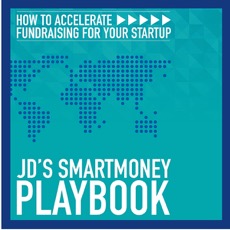Founders of startups often misinterpret the phrase “exit strategy.” Many think that the phrase refers to selling the business or the founding team leaving the company. While that may happen, the “exit” in exit strategy doesn’t refer to the founders or owners. It refers to the money.
Since up to 75% of startups fail because they run out of cash, it’s easy to understand why money is the lifeblood of every business. No money, no business. And, the irony is that many of the startups that fail are actually growing. But fast growing businesses can still crash and burn, just as Boston Chicken did some 20 years ago when it expanded too rapidly.
To prevent hitting a cash crunch like that (and to seek guidance from smart money investors), startup founders raise money early and often.
The first folks to invest in the startup are typically angel investors. But the angels have a different objective than that of the founders who started the company with passion and a dream. The angels objective is to get their money back with a substantial gain in exchange for taking the risk. To achieve this goal, the money they put into the business must exit in order to return to them. Otherwise, there’s no gain.
So exit strategy refers to the money exiting the business, and it’s a critical business objective to achieve. Therefore, smart entrepreneurs plan for an exit strategy from day one.
Typical Exit Strategy Events
Most often, angel investors exit a business investment in one of two ways.
- Their portfolio company is acquired by a strategic corporate buyer.
- Their portfolio company sells shares in an initial public offering (IPO), usually on the NASDAQ or NYSE stock exchanges.
Either of these events are not only the goal of the investor, they’re often the dream of the entrepreneur when the business is first conceptualized. Achieving that goal requires a great idea, a strong team of both managers and smart money investors, timing and great execution.
 Once a founder has the business on a growth trajectory the business really starts to burn through cash, making it critical to raise capital. The CEO may know how important the “right” management team is, but often doesn’t appreciate how important the “right” investment team is. When that’s the case, CEO’s tend to take a shotgun approach to raising money, an approach that wastes many months. Oh, the CEO does get many meetings, but never really understands why investors aren’t listening to them.
Once a founder has the business on a growth trajectory the business really starts to burn through cash, making it critical to raise capital. The CEO may know how important the “right” management team is, but often doesn’t appreciate how important the “right” investment team is. When that’s the case, CEO’s tend to take a shotgun approach to raising money, an approach that wastes many months. Oh, the CEO does get many meetings, but never really understands why investors aren’t listening to them.
I describe how to find the right investors in the SmartMoney Playbook. It’s free, and you can grab it here.
If you want investors to listen to your pitch, think about their needs before thinking of your own. And their needs are an exit of their investment that delivers a substantial return. In other words, investors think with the end in mind. You should too.
Given how fundamental and critical an exit strategy is to the success of a business, it’s a wonder why startups don’t create an “exit committee” or “exit team” from the get go. Audit committees, customer satisfaction teams, R&D committees and more are commonplace, but I’ve yet to see a startup form an exit committee.
If you’re a CEO of a startup or are contemplating one, I suggest you learn from investors and start with the end in mind.
Actually, the process I teach of how to create your investor target list helps you to articulate an exit strategy.
How?
Because to create the target list we scrutinize all past deals in your space. These include angel and venture investments, but also IPO’s, mergers and acquisitions and even strategic corporate investments.
Incorporating that intelligence into your pitch will get investors attention, and get your business the funding it needs. To learn how to create your own target list, download my FREE playbook: How to Accelerate Fundraising for Your Startup. If you are in a hurry and need a target investor list now, we can help you.
Join Us in a 30-Day Sprint for SmartMoney.
Our sprint program kicks off October 3, 2017 and is reserved for those who are poised and ready to take action to accelerate their path to funding. Sign up here to get on our wait list.







